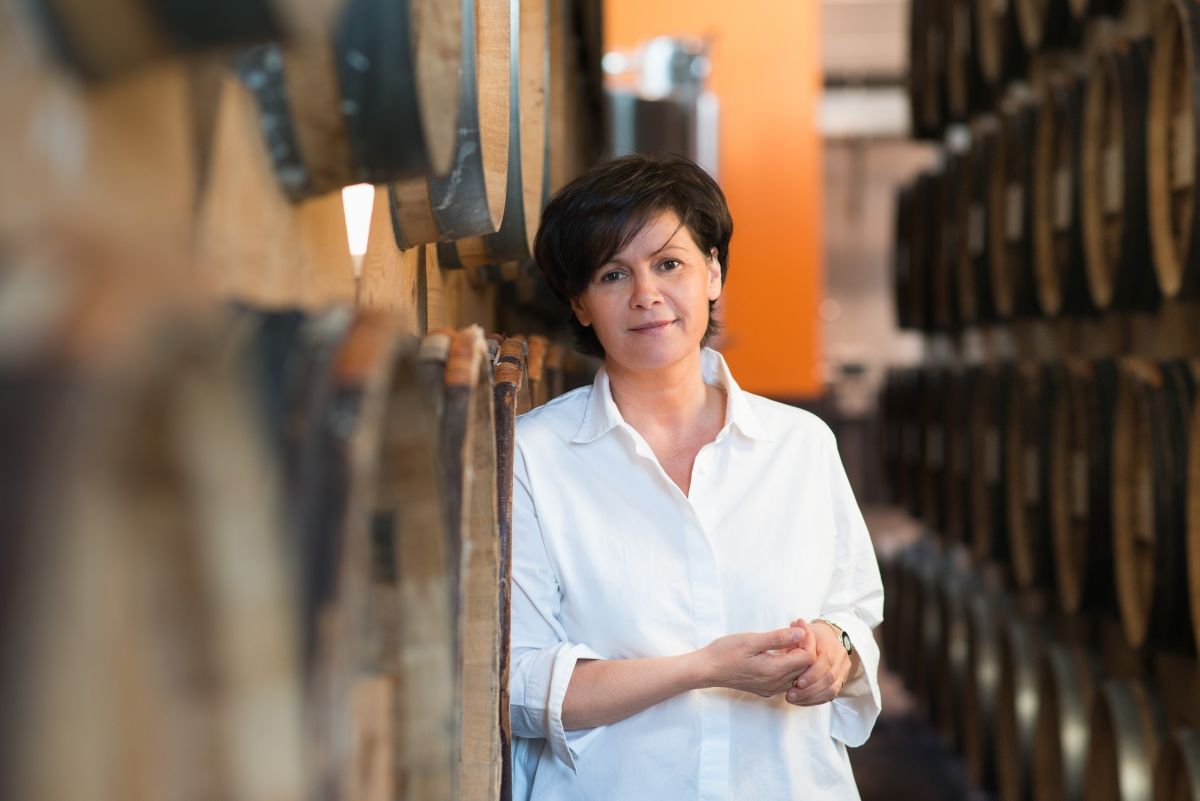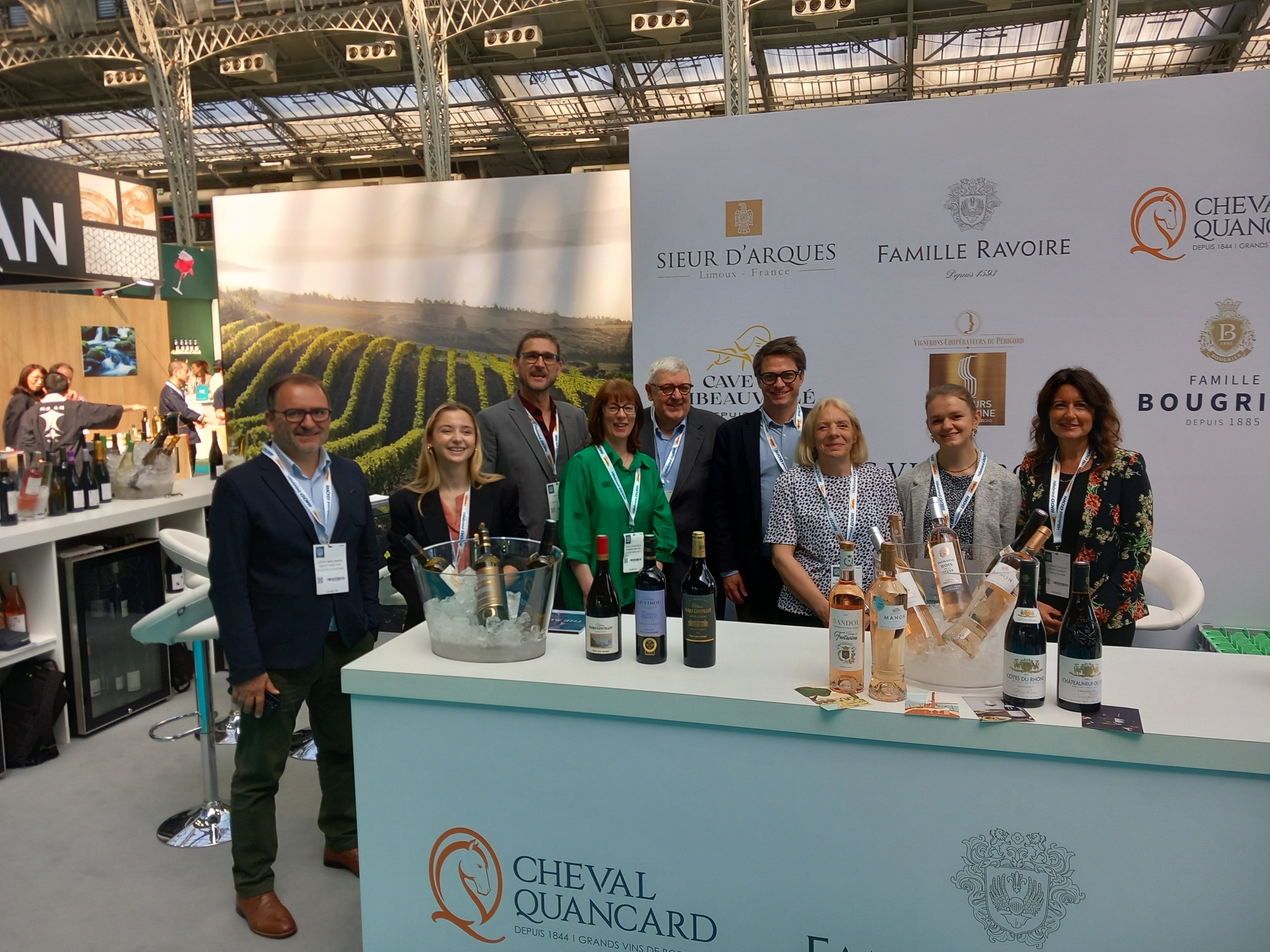Miren de Lorgeril, the new president of the Languedoc’s trade body the CIVL, looks at what challenges and opportunities there are for the region and how she hopes to help producers expand exports around the world.

Miren de Lorgeril, newly appointed president of the CIVL, the first woman in France to hold such a position
How do you feel about becoming the first president of the CIVL, and the first woman to hold such a role?
I’m very honoured to be in charge of defending and promoting the fantastic work of all Languedoc producers.Being a woman in this position is just a reflection of the reality: many women are involved in Languedoc vineyards from the grape to the market, and they are now increasing their visibility.
Do you feel you have faced any discrimination in your career, given the wine industry is still largely male-dominated?
The wine world is still marked by a large male presence, but women’s place is increasing and when they are good professionals I think they never suffer any discrimination, and they often enjoy more admiration.
How would you describe Languedoc’s wine industry, and what is its USP?
The Languedoc wine industry is finishing its revolution and settling down as a major quality-producing region. We began upgrading the quality of our range some time ago, and this remains a top priority for us, and the results are starting to show – in France, for example our penetration rate has doubled in less than 10 years. Our position today is very exciting, because we are still building and reaching out for new ideas, which opens the door to a lot of diversity and contrasts – modern yet traditional; exclusive, yet accessible.
What are the main challenges facing producers in the Languedoc?
The latest preoccupations evolve around climate change. A lot is being done to prepare for it, and a lot of progressive thinking derives from it. There’s a general motivation in our region to have a more sustainable viticulture, and we are proud to represent 30% of France’s organic vineyards.
Saint-Chinian, a Languedoc appellation north-west of Béziers in the department of Hérault, at the foot of the Massif du Caroux and Espinouse.
What is new from the Languedoc? Any experimentation with new varietals or growing methods?
Yes, for instance, we have think tanks about sustainable irrigation. We are also re-introducing forgotten grape varietals in our region, because they are better suited to more warmth and less water. The Institut National de Recherche Agronomique (INRA) located in Narbonne is also doing research on new grape varietals that could be the future of our wines. And of course, our producers focus more and more on sustainability, making the Languedoc the biggest organic wine region in the world.
How are exports faring, and where are your key markets?
Roughly 35% of AOP wines are currently exported. That is a stable figure. Our biggest market has been China for the last few years which accounts for around 19% of exports in value, followed by the UK (11%), Germany (10%), Belgium (8%). In volume terms China is our biggest market accounting for nearly a quarter o f sales, followed by the UK with 13%, Belgium on 12%, Germany 11% and the US with 10%. The upgrading of our wines has been very effective, and this is where the greatest scope for growth lies.
Which export markets do you believe hold most potential for growth?
Today, we have big hopes for Scandinavia, Japan and English speaking Canada and the US. Those markets are targets for expansion for the next few years. We have already started to work on strategic communication plans to support sales in those areas.
Which are the key varietals grown in the Languedoc and are there any emerging grapes/styles that you think hold particular potential?
Syrah and Grenache are our main DNA. But we also have some varietals that distinguish us from other regions. For instance, Carignan. It is accepted in most of our AOC’s regulations, but it’s especially Corbières that is attached to it. Carignan has been through a time of difficult times in the early 2000’s, but today it’s back, especially the old vines of Carignan which produce well structured yet elegant wines. The white varietal that is unseen elsewhere is Bourboulenc, used a lot in the region of La Clape.
Chateau Pennautier, the de Lorgeril family’s original estate near Carcassone
Which other French regions or other countries do you consider your main competition?
We consider that our region has its own charm and that it is sufficiently different from other not to be an actual “competitor”. However, we do realise that our red wine consumers often enjoy drinking Côtes du Rhône as well. Our rosé drinkers are the same as those from Provence. We also share sparkling enthusiasts with Cava and Prosecco drinkers.
What do you think the UK perception is of wines from the Languedoc? Do you think there is much awareness of the region in the UK?
The UK consumer seems to hold Languedoc wines in a special place of their hearts. They associate our cuvées with the sun and the quality time of their holidays. That’s the reason we have centred our campaign theme around the idea of “the good life”: qualitative wines, beautiful landscapes, warm weather and the sheer joy of the South of France. Languedoc is a well-known wine region but we still have some work to do on explaining our specificities.
How was the 2018 vintage, and how does it compare to last year?
It has been a very good year for most of the wine regions with magnificent grapes in all the appellations. Appellations reverted back to more normal yields, even though the overriding trend in Languedoc is a decline in AOC yields due to efforts to improve quality and use of vineyard management techniques such as cluster thinning and single vineyard selections. First rate vineyards and seasons that developed beautifully have shaped the quality of this latest vintage. Delicate aromas and harmonious wines are gradually revealing themselves in the wineries.”
What about prices? Will a larger harvest result in a downward pressure on pricing?
It is not Languedoc policy to have big price fluctuation on its AOP vineyards, no matter if the harvest is large or not.
What proportion of production is currently organic? Are an increasing number of producers switching to organic, and if so why?
About 25,000ha of the vineyard is organic or being converted. The progression is up by 11% in the last 5 years, and now accounts for over 5% of producers, and 9.4% of the wine growing area of the Languedoc. Sales of organic wine in the retail sector are up by over 13% in 2016.
What is the region doing to ensure future sustainability? Any new initiatives in this regard?
It is one of our key goals to increase our transformation to achieve 100% of states being sustainable within 10 years.
What do you hope to achieve in your tenure as president, and what are your immediate priorities?
I want to participate in settling more Languedoc among top wines regions in the world. Sustainability, knowledge of “terroirs” and rosé expense will be the focus of the next three years. Sustainability is going to be at the heart of what we do here, using the savoir-faire and innovative methods of our winemakers, we plan to develop the quality of the AOC and IGP wines of the Languedoc even further.
What do you think the future holds for the region?
Languedoc is the most dynamic and renewed vineyard in France, both involved in sustainability and modernisation. The future will be good for sure: we will see an increase in quality and diffusion especially in major markets as USA/Asia.










































